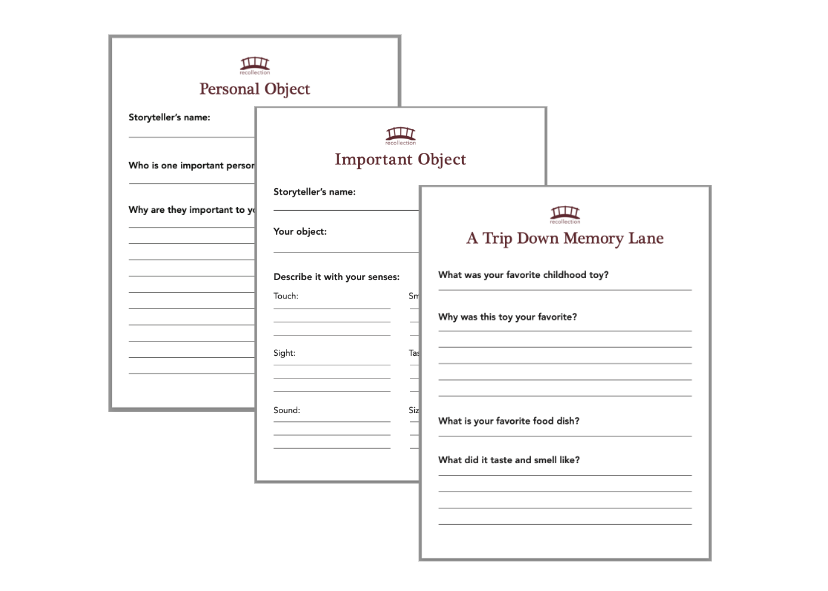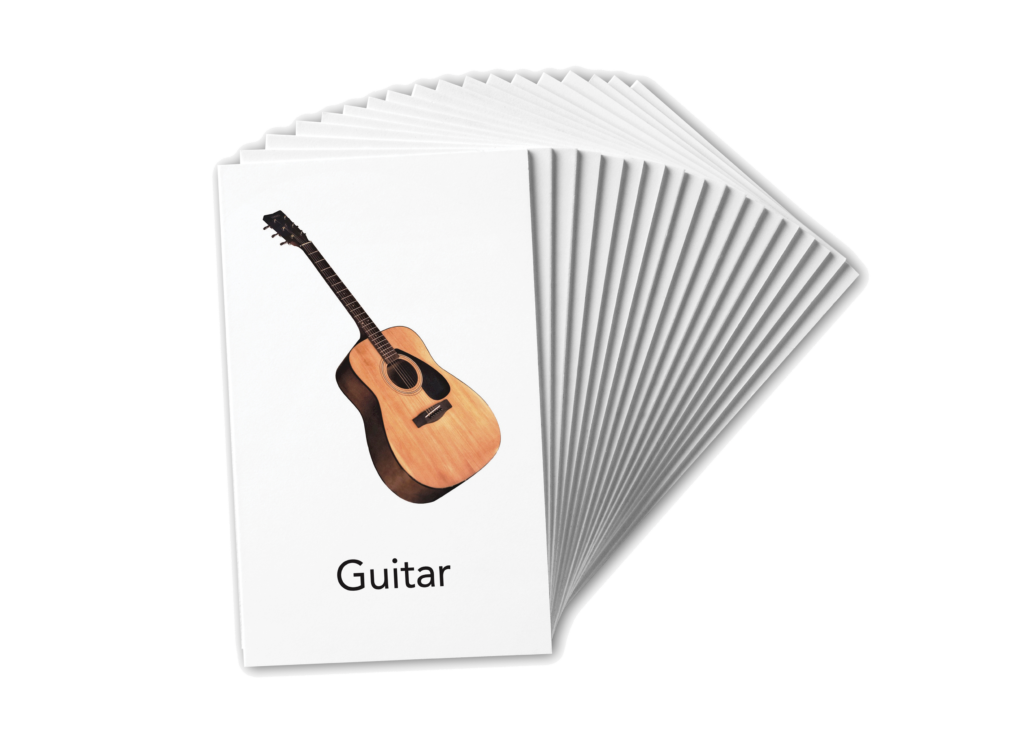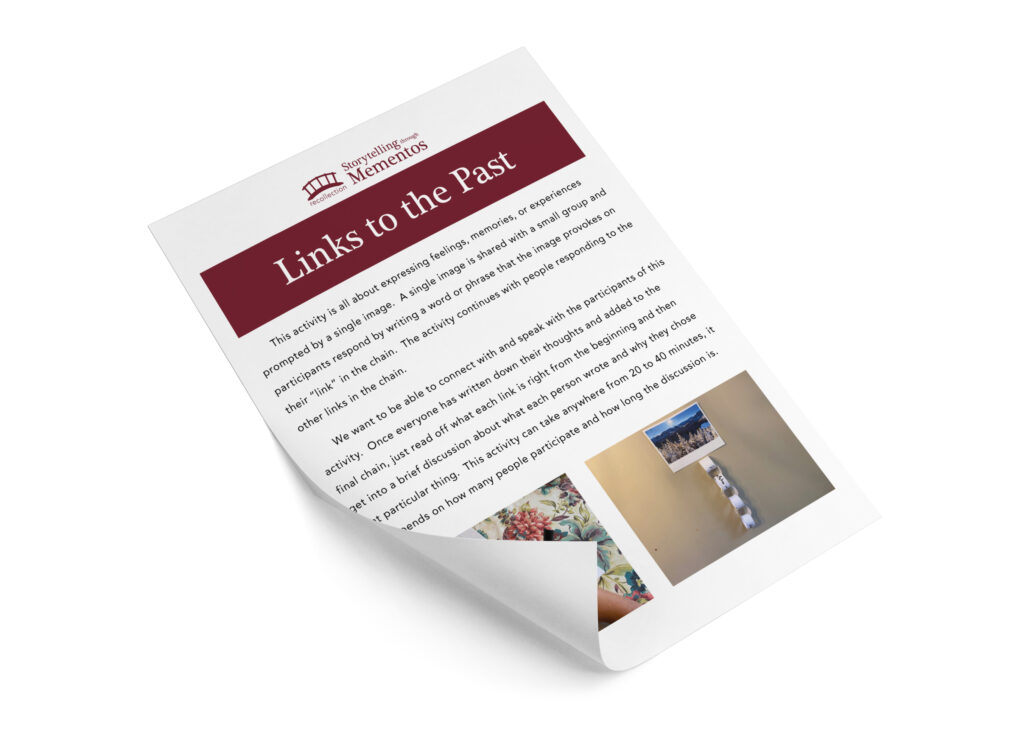DIY Kit
Start with an object
and discover a story.
Our conversations often focus on the trivial: weather, the food we are eating or logistics. Sometimes it might feel like we don’t have anything in common with a member of our community (or even a member of our family—especially one of a different generation). Objects can help us find connections with others, inspire us, and unlock memories.

Storytelling Worksheets
Hidden in the objects we surround ourselves with are moments of our personal histories, our values, our preferences, our pain, and our passion. Take the time to ask someone about an object they keep close to them that has caught your eye. Tell them why you are interested in it. Find out what the object is, when and how they acquired it, and why it is important to them. Most importantly, listen carefully to what they have to say! The best part about storytelling with personal objects is that it can be done anywhere at any time. Use our worksheets for a more guided approach to this storytelling technique.
Personal Object
This worksheet to explore how people are connected to each other with objects. The facilitator first asks about an important person in the participant’s life and then about an object that person has given them at some point. The object does not need to still be in the participant’s possession.
Important Object
This worksheet is a great way to explore objects in a small group, especially objects participants are not familiar with. This requires each participant to bring an object to the conversation. The group starts the conversation by exploring the object through their senses: touch, smell, sound, etc. and then explores the history of the object. The facilitator should ask questions about what the object is, how the participant came to have the object in their possession, and why it is meaningful to them.
A Trip Down Memory Lane
This worksheet facilitates a conversation about a variety of different types of objects: a toy, a food, a song, and a place. It is recommended that the facilitator ask all participants about one of the objects at a time — allow everyone to contribute and ask questions of one another before moving on to the next object.
Storytelling Deck
This is a set of 48 cards of a variety of objects from food to telephones to airplanes. This deck can be used in a variety of ways to start a conversation or to create a story. This technique works well across generations and a range of cognitive abilities.
Conversation Starter
Shuffle the deck and flip one card over at a time. The facilitator should read the name of the object on the card and then ask participants to share what the object reminds them of (and maybe even why). There are no right or wrong answers. A variation is to share 3 to 5 cards at once and have the participants identify which object resonates with them the most and why.
Slide deck version is also available for virtual storytelling.
Collaborative Story
The facilitator should gather 5-10 object cards. With a partner or group, choose one of the gathered cards to invent a story about. Start the story by identifying the object, who owns the object and why. Continue to develop a narrative by allowing all participants to contribute. The facilitator can ask questions like, “What does [insert character’s name] do with the object?” and “What happens next?” When the team gets stuck, ask a participant to introduce another object into the narrative to build a plot or move the story along. The story ends when the team decides the story is wrapping up. Once the story is complete be sure to title it!
Want to make your story into a keepsake? Use our Collaborative Story Template for MS Word.


Links to the past
This activity uses a single image to prompt feelings, memories, and experiences within a small group.
Participants are each provided with a paper chain link to write a response to the image. They then attach their link to the chain and then respond to links written by other participants. The facilitator reads out contributions as they are added to the chain.
This activity takes between 20 and 40 minutes. Use our detailed instructions and chain template to learn more.

Download DIY Storytelling Kit
Excited about storytelling? We are! The kit is free for you to download and use. We just ask that you fill out a brief survey to help us understand who is accessing the kit and why. Survey results will only be reported in the aggregate. Once you are finished with the survey you’ll be redirected to the download page.